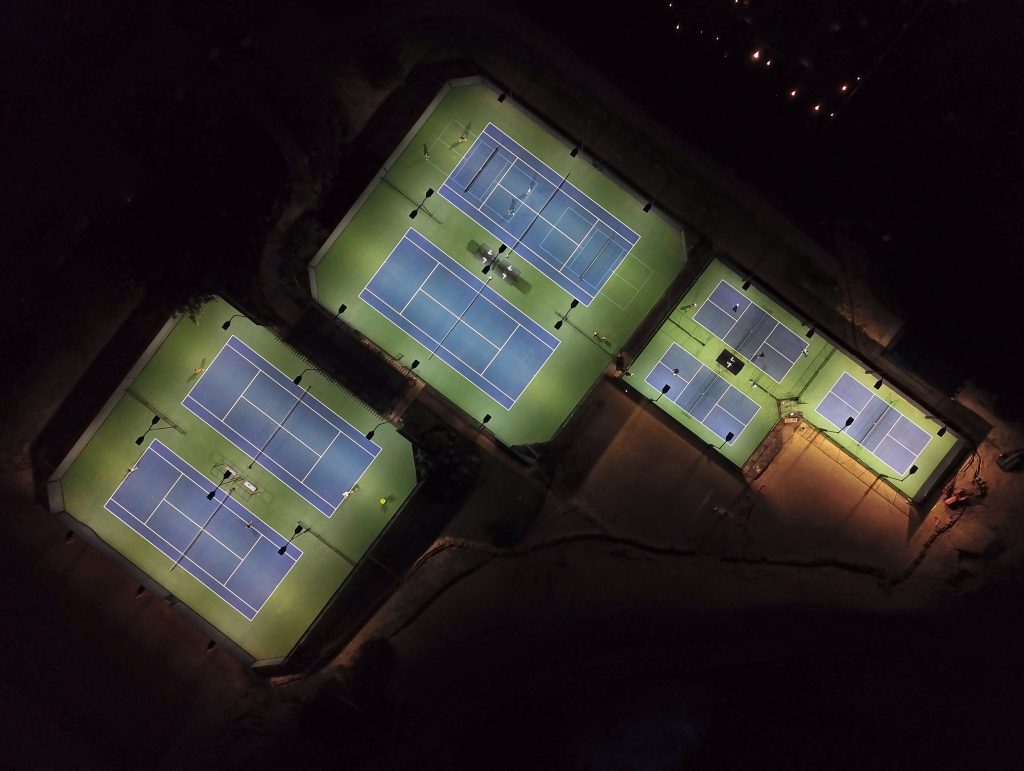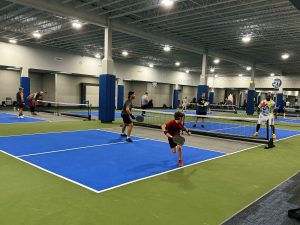Image courtesy of Bridger Bowcutt on Unsplash
If you are reading this, then you have likely been bombarded by emails or suggestions to implement pickleball courts at your facility. The pickleball craze is real and seems to only grow in popularity with every day that passes. To stop the barrage of requests and provide your community with a great place to participate in their new favorite sport you will need to develop some pickleball courts. This article will go over the basics of what you need to do to build pickleball courts and start hosting games, or even tournaments, at your facility.
Location and Size
Pickleball courts can be built indoors or outdoors, so where you decide to put them is entirely up to you. You should take into consideration the weather conditions in your area. Playing pickleball outside is great for enjoying the weather and the outdoors while getting some exercise, but if you live in an area that is cold and rainy more than it is warm and sunny, you are better off building the courts inside.
Inside or out, you will need to find a flat area with enough room for the number of courts you plan to build. A pickleball court is 20 feet wide and 44 feet long, but the playing area for a court should be at least 30 feet by 60 feet. Although for tournament play and improved safety, it is recommended to have a play area of 34 feet by 64 feet. With those dimensions in mind, be sure to find a location with enough room to accommodate the number of courts you want and any amenities you want, such as lighting, seating, soundproofing, windscreens, fencing, and shaded areas. For reference, a tennis court converted to pickleball courts typically fits four courts.
Base Material and Surface Type
If you are planning on developing indoor pickleball courts, your options for base materials are concrete, asphalt, interlocking plastic tiles, and polyurethane. Plastic tiles are typically more expensive and better for temporary solutions so you should consider using the other three options for your base material. Concrete and asphalt are both affordable options that work great, but asphalt requires more frequent upkeep and repairs than concrete. Polyurethane is a popular base material for indoor sports and provides athletes with a slight cushion that will help to reduce the impact on players’ knees and ankles. Concrete and polyurethane are the most popular base materials for a pickleball court.
If the court is outdoors, the options remain the same, but the surface needs to be graded to allow for proper draining. Again, concrete and polyurethane are the most popular options. Polyurethane will need to be applied over a concrete surface, making it a more expensive surface to apply. However, it is durable, long-lasting, and provides better shock absorption.
No matter where you decide to build your pickleball courts, if you use asphalt or concrete as your base material, you need to apply a surface finish to the top. The coating applied to the top of the base will protect the base and extend its life while also providing a textured surface for non-slip footing, good pickleball bounce, and minimum abrasion.
Fencing, Lighting, and Amenities
Your court should have a fence around the perimeter to keep the balls from escaping the play area and prevent people from interfering with games. If you plan on building multiple pickleball courts, you should install short fences between each court with padding on top. The short fences will stop the pickleball from rolling onto other courts. There should be gaps in the fences so that players can access every court. However, be sure to plan out where the gaps are so that players can get from court to court without interrupting play.
If lighting is desired, the level of competition that the courts will be used for needs to be determined ahead of time. Typically, lights are installed on the outside of the courts, but multiple courts that will be used for tournament-level play may require lights to be installed between each court. If that is the case, you will need to determine their location before pouring the base material so that wires can be run underneath the courts. Any light poles within the play area should be at least five feet from any sidelines and should have padding wrapped around the base.
Power and water are the only other amenities that would require pre-planning before the base material installation. Beyond that, most of the other amenities can be placed on the playing surface. But be sure to place any benches or ball holders in places that don’t obstruct play.
When done, you can now announce to your community that there are pickleball courts available. Within seconds you will likely have a long line of athletes looking to break in the new courts. Communities haven’t been able to keep up with the demand for pickleball courts so by bringing a few into your area, you will be rewarded with a stream of new customers. If you have any questions or are looking for someone to help with sports facility management, give us a call at (727) 474-3845 or contact us.






